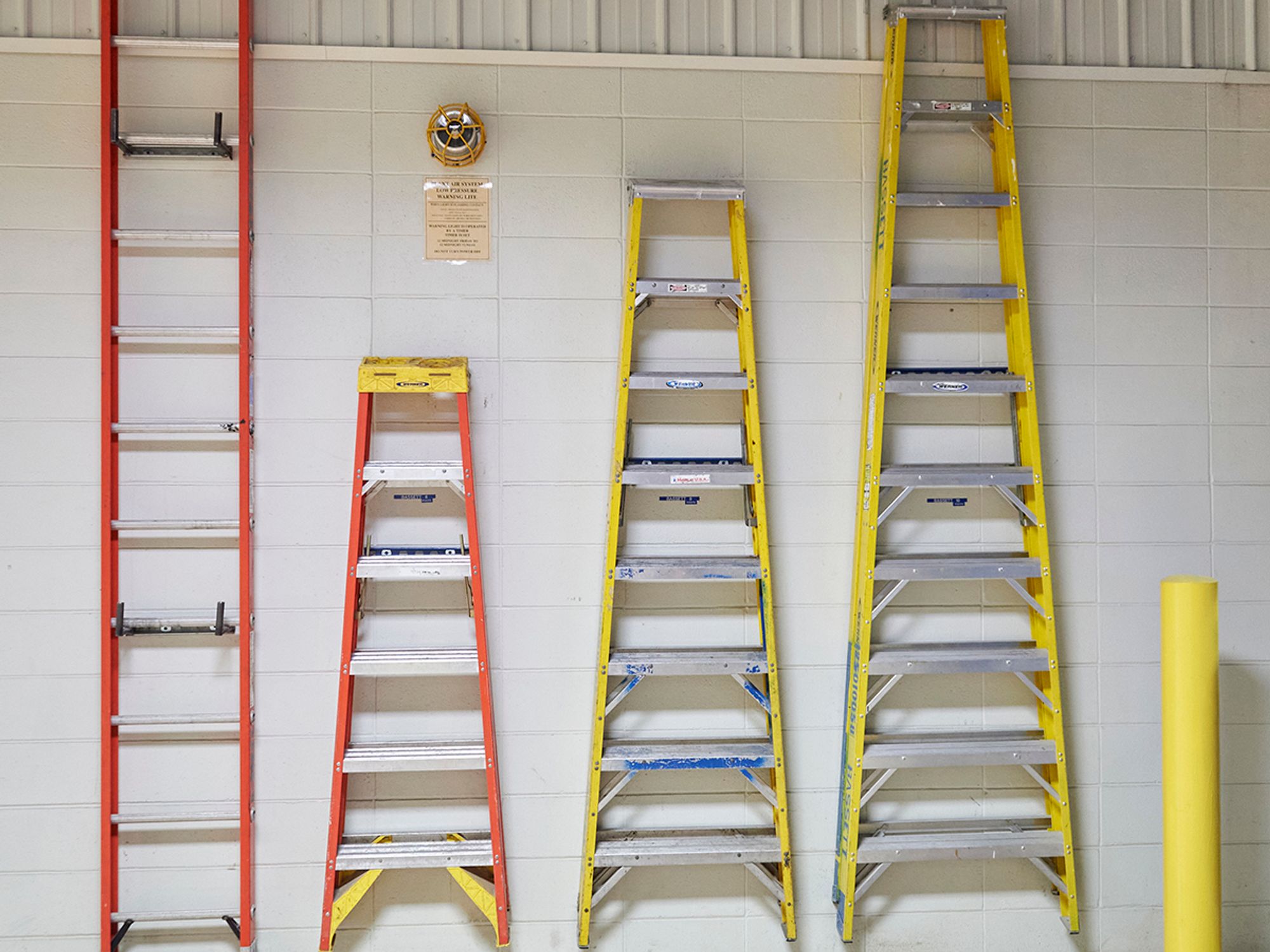Key definitions

- Key definitions for ladders are found in this section.
Cage: An enclosure mounted on the side rails of a fixed ladder or fastened to a structure behind the fixed ladder that is designed to surround the climbing space of the ladder. A cage also is called a “cage guard” or “basket guard.”
Carrier: The track of a ladder safety system that consists of a flexible cable or rigid rail attached to the fixed ladder or immediately adjacent to it.
Combination ladder: A portable ladder that can be used as a stepladder, extension ladder, trestle ladder, or stairway ladder. The components of a combination ladder also may be used separately as a single ladder.
Grab bar: An individual horizontal or vertical handhold installed to provide access above the height of the ladder.
Ladder safety system: A system designed to eliminate or reduce the possibility of falling from a fixed ladder. A ladder safety system usually consists of a carrier, safety sleeve, lanyard, connectors, and body harness. Cages and wells are not ladder safety systems.
Mobile ladder stand (ladder stand): A mobile, fixed-height, self-supporting ladder that usually consists of wheels or casters on a rigid base and steps leading to a top step. A mobile ladder stand also may have handrails and is designed for use by one employee at a time.
Mobile ladder stand platform: A mobile, fixed-height, self-supporting unit having one or more standing platforms that are provided with means of access or egress.
Riser: The upright (vertical) or inclined member of a stair that is located at the back of a stair tread or platform and connects close to the front edge of the next higher tread, platform, or landing.
Side-step ladder: A type of fixed ladder that requires an employee to step sideways from it in order to reach a walking-working surface, such as a landing.
Stepstool: A self-supporting, portable ladder that has flat steps and side rails. The term includes only those ladders that have a fixed height, do not have a pail shelf, and do not exceed 32 inches (81 cm) in overall height to the top cap, although side rails may extend above the top cap. A stepstool is designed so an employee can climb and stand on all of the steps and the top cap.
Through ladder: A type of fixed ladder that allows the employee to step through the side rails at the top of the ladder to reach a walking-working surface, such as a landing.
Well: A permanent, complete enclosure around a fixed ladder.
